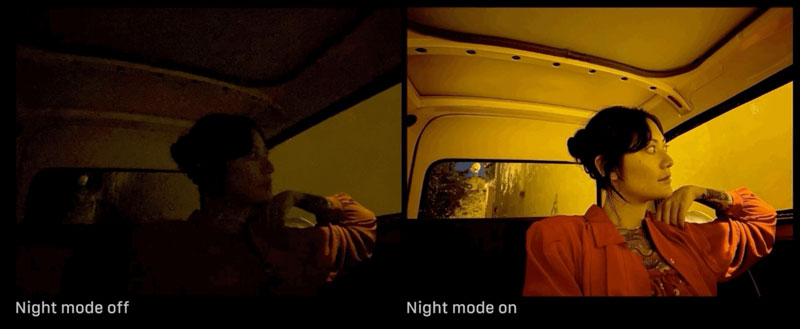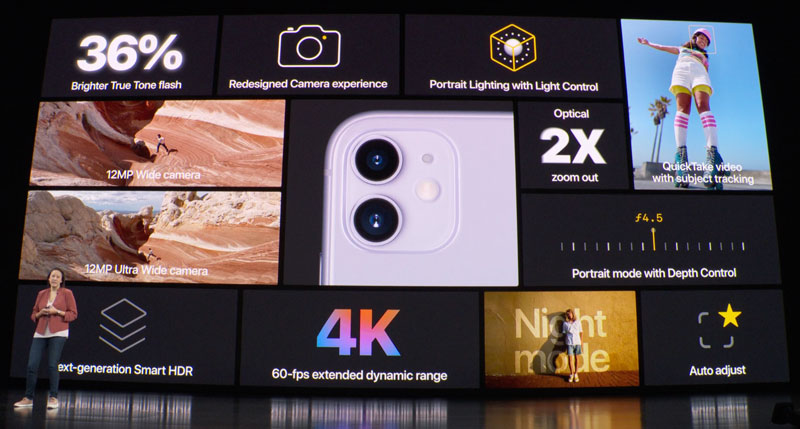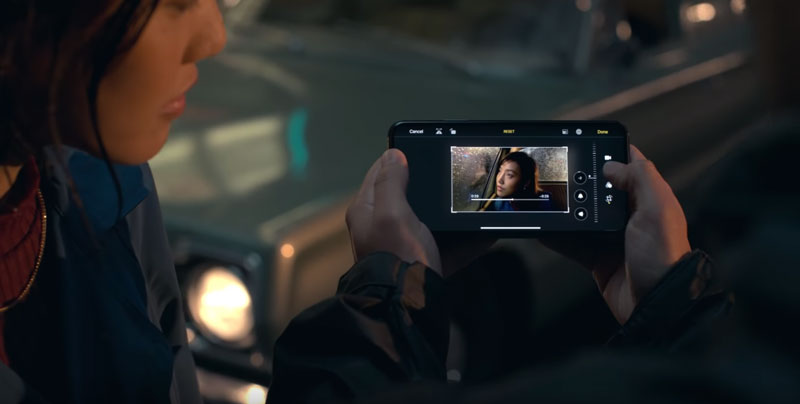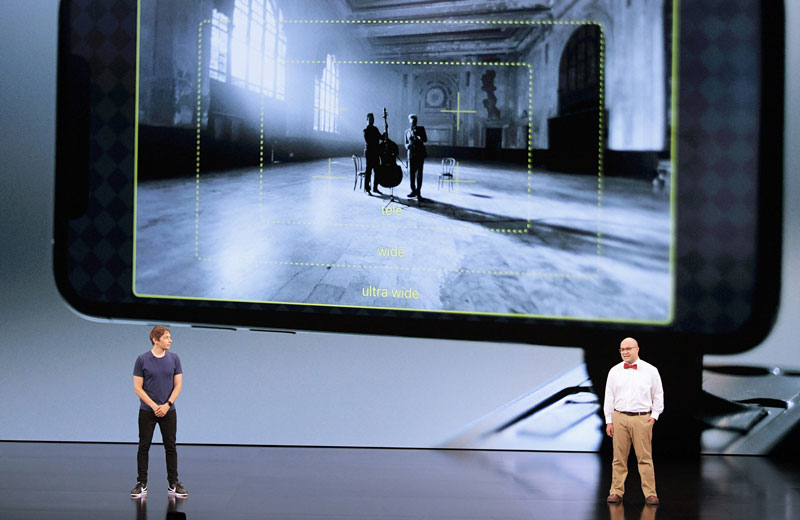iPhone 11 Pro Designed for Smartphone Filmmakers
Last night, Apple officially announced its latest iPhones. As the rumours suggested, the new iPhones come with the raised square camera housing on the back. The rumours also suggested the new iPhone 11 would be all about the camera and this looks to be true too.
The iPhone 11 Pro is the first iPhone to come with a “Pro” tag at the end. This is not just a gimmick, as the phone is designed with professional photographers and filmmakers in mind. Apple even had Tangerine director Sean Baker and FiLMiC chief technical officer Christopher Cohen explain how FiLMiC Pro utilizes all the cameras of iPhone 11 Pro.
iPhone Pro & Pro Max
So what cameras will we get with the new pro iPhones? All the 3 rear cameras and front camera will have 12 megapixel sensors.
- regular 26mm lens with f/1.8 and OIS (Optical image stabilization)
- ultra-wide 13mm lens with f/2.4 and 120 degree field of view
- telephoto / portrait 52mm lens with f/2.0 and OIS.
Apple says it has made significant improvements to photo and video processing with the latest iPhone cameras. The telephoto is Apple’s latest camera designed for portrait photos and is exclusive to the iPhone 11 Pro models.
The big news for smartphone filmmakers using FiLMiC Pro is that Apple have allowed app makers to record from more than one camera simultaneously. So, you can now capture ultra-wide footage and telephoto footage at the same time.
Low-light AI Magic
The iPhone 11 and 11 Pro enhance highlights and bring more detail into each still shot. Stills photography is optimized for low-light settings with the help of a new Night mode, like the Pixel’s Night Sight.

In this Apple released image you can see before and after. The left is without Night mode, showing a lot of noise in the shadows. The right is with Night mode on which is much brighter and it looks like we’ve entered a twilight zone where we can all see in the dark, like owls.
Note, the banding in the brightened photo is not apparent in the original image from Apple.
Reduced Exposure and Colour Shifts
Apple has worked to prevent shifts in exposure and colour tone when changing between lenses, primarily an issue when recording video.
Audio Zoom
Apple have announced an audio zoom feature which will hone in on the audio coming from the subject, if you are aiming the phone at them. So, this should improve voice audio captured directly from the phone’s inbuilt mics.
Deep Fusion
This feature analyzes 9 photos (including a long-exposure) taken in sequence. The iPhone’s neural engine then analyzes them to create a single composite photo that takes the best bits from each one.
Extra Battery
Apple say the iPhone 11 Pro will provide you with up to 4 more hours of battery life. The iPhone Pro Max will add up to 5 hours more. The key words in there being “up to”, but at least extra battery life is always a bonus.

Fastest Chip
Apple say their new A13 chip is the fastest in a smartphone and more efficient than ever.
Extended Dynamic Range
The new iPhone 11 Pro has extended dynamic range, which is now capable of shooting 4K video at 60 fps. This is twice as many frames per second than previous iPhones.
More Video Editing Tools
Apple have brought tools previously only available for stills into their native video editing software. iOS 13 has added more editing features bringing you the ability to shoot and edit on your iPhone, without purchasing extra apps.
I’ve yet to see all the features, so can’t compare to leading apps such as LumaFusion.

More Reasons for Smartphone Filmmakers to Choose an iPhone
So there appears to be a lot of exciting developments for smartphone filmmakers, especially in the Pro and Pro Max versions of the iPhone 11.
Having said that, the 3 lenses on offer (as with all smartphones so far) are really about cropping the image, or squeezing more of your surroundings in. This is still of more use to selfie-taking consumers than professionals, in my opinion. A true telephoto or long lens gives you a whole different image quality, not least a shallow depth of field which no smartphone is yet capable of.
I don’t want to sound too negative. But I do find the use of terms such as “pro” and “telephoto” to be something of stretch (of course Apple aren’t the only ones to use ‘telephoto’). Even conversion telephoto lenses are more a zooming in device, with minimal shallow depth of field added.
On the other hand, it’s good to see a smartphone maker acknowledging filmmakers like Sean Baker and therefore indicating they see video as more than just an afterthought when designing iPhones. And I think there’s still more to come from smartphone design in the future, especially with Samsung’s new Isocell Bright HMX sensor on the horizon.
I would say it’s definitely an upgrade, but not quite a revolution. But there’s certainly some major steps forward. Can we call it an iPhone 11 Semi-pro?
Here’s Sean Baker and Christopher Cohen talking about how FiLMiC Pro will work with the new iPhone 11 Pro and Pro Max.
Eager to learn more?
Join our weekly newsletter featuring inspiring stories, no-budget filmmaking tips and comprehensive equipment reviews to help you turn your film projects into reality!
Simon Horrocks
Simon Horrocks is a screenwriter & filmmaker. His debut feature THIRD CONTACT was shot on a consumer camcorder and premiered at the BFI IMAX in 2013. His shot-on-smartphones sci-fi series SILENT EYE featured on Amazon Prime. He now runs a popular Patreon page which offers online courses for beginners, customised tips and more: www.patreon.com/SilentEye



Does anyone know how we would add an nd filter to this phone?
Check out Moment. They have great gear, and accessories for mobile photography and videography.
What is that mount used to attach iPhone to the head in this video? I have a Manfrotto that is a little flimsy.